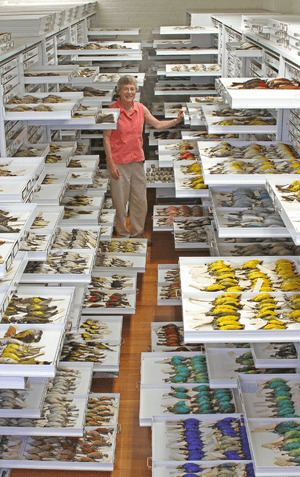Museum of Comparative Zoology facts for kids
The Museum of Comparative Zoology (often called MCZ) is a special museum at Harvard University in Cambridge, Massachusetts. It's one of three natural history museums at Harvard. The public can visit parts of it through the Harvard Museum of Natural History.
The MCZ has about 21 million animal specimens! These are used for research, but some are shown to the public. The museum also has a public online database called MCZbase, where you can look up its collections.
Many things on display are not just interesting animals, but also have cool histories. For example, you might see a fossil sand dollar collected by Charles Darwin in 1834. There's also a mamo bird collected by Captain James Cook, and two golden pheasants that once belonged to George Washington.
Since 2021, Gonzalo Giribet has been the director of the museum. He is a professor and expert in animals without backbones.
History of the Museum
The Museum of Comparative Zoology was started in 1859 by a scientist named Louis Agassiz. People used to call it "The Agassiz" after him. Agassiz wanted the museum to show all the different kinds of animal life and how they are related. He imagined a place for studying all parts of natural history, from rocks to plants and the biggest animals. He even wanted to include humans from an archaeological point of view.
His son, Alexander Agassiz, helped him and later became the museum's director in 1875. Alexander worked for 23 years as a curator and 10 years as director. He gave a lot of money to the museum and Harvard University. Many women scientists, like Elvira Wood, also helped build the museum in its early days.
What Do They Study?
The museum has nine main departments that focus on different types of animals for research. They also have a library.
- Entomology: This department studies insects.
- Herpetology: They study reptiles (like snakes and lizards) and amphibians (like frogs).
- Ichthyology: This is where they study fish.
- Invertebrate Paleontology: This group looks at fossils of animals without backbones, like ancient shells or trilobites.
- Invertebrate Zoology: They study living animals without backbones, such as worms, spiders, and jellyfish.
- Mammalogy: This department focuses on mammals, like bears, bats, and monkeys.
- Malacology: They study mollusks, which include snails, clams, and octopuses.
- Ornithology: This is the study of birds.
- Vertebrate Paleontology: This group studies fossils of animals with backbones, like dinosaurs and ancient mammals.
The Ernst Mayr Library is the tenth department. It holds many books and old papers about natural history.
Amazing Museum Displays
Unlike some newer museums, the Harvard Museum of Natural History has hundreds of taxidermy animals (animals that are preserved and stuffed) from the MCZ collections.
Some of the most famous things you can see include:
- Huge whale skeletons.
- The largest turtle shell ever found, which is 8 feet long!
- "The Harvard mastodon," which is a skeleton of an ancient elephant-like animal.
- A giant Kronosaurus skeleton, a sea reptile that was 42 feet long.
- The skeleton of a dodo, a famous bird that is now extinct.
- A coelacanth, a very old type of fish, preserved in fluid.
The Great Mammal Hall, which has many large mammal displays, was updated in 2009. This was to celebrate the museum's 150th birthday!
The museum also has changing exhibits. Some past exhibits have been about "Evolution," "The Language of Color," and "Mollusks: Shelled Masters of the Marine Realm."
Gallery
See also
 In Spanish: Museo de Zoología Comparada para niños
In Spanish: Museo de Zoología Comparada para niños







